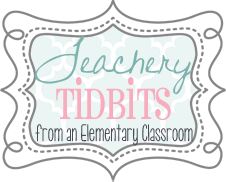Hi I'm Brooke from Teachable Moments, guest blogging for Natalie today. I wanted to give you some ideas about how to get your students writing great stories (or narratives if you like the technical term).
In my school we all use the same approach to literacy and part of this is a 'formula' for writing different text types. For narrative we try to give the kids some steps to follow rather than just say "Go write a story" which we know is extremely hard, especially for young kids.
Firstly we plan our story. For this we use a graphic organiser. I encourage the kids to plan their story with pictures, rather than words as this gets them imagining what their story will be about and gets them 'making movies in their heads' - ie. visualising.
The headings we use for our organiser are Character, Setting, Event 1, Event 2, Event 3, Climax.
In my school we all use the same approach to literacy and part of this is a 'formula' for writing different text types. For narrative we try to give the kids some steps to follow rather than just say "Go write a story" which we know is extremely hard, especially for young kids.
Firstly we plan our story. For this we use a graphic organiser. I encourage the kids to plan their story with pictures, rather than words as this gets them imagining what their story will be about and gets them 'making movies in their heads' - ie. visualising.
The headings we use for our organiser are Character, Setting, Event 1, Event 2, Event 3, Climax.
I like the students to then flip the page over and write a few words to describe each picture, just in case they forget what they have drawn :) Click on the graphic to get your copy.
The character and setting forms the 'orientation' of the story which is where the students try to answer the "W" questions of Who? What? When? Where? The orients the reader to what the story is going to be about and sets the scene for what is to come in the story.
The plan is designed in such a way that it is meant to indicate that each 'event' in the story gets more exciting/dramatic/scary and it builds up to the climax, which should be the most exciting part of the whole thing.
Once the plan is done, then we start to write. Each box (character and settings are considered 1 box) represents one paragraph, so that by the end, they should have 5 paragraphs (hopefully!) We also talk about that each paragraph should have a variety of sentence types (simple, compound and complex) to increase the readability and interest in their story.
The other thing that we discuss at length is adjectives and adverbs and how important they are to make an interesting story. I use a lot of visualisation during these discussions and give examples. I might start with a simple sentence such as "The boy ran away". Then add adjectives and adverbs to increase the excitement and add to the visualisation. "The little frightened boy was wearing a blue tshirt. He ran away quickly because he was being chased my a big, angry dog". I have found this gives students ideas about how easy it can be for them to add some more info to their writing.
Teaching year 2, I usually write a story over the week, doing one part each day until we have a finished story.
Hopefully this has given you a few new ideas on how to get your students writing better stories.
Thanks Natalie for having me :)













Love your post Brooke!
ReplyDeleteBlessings,
Jessica Stanford
Mrs. Stanford's Class
I could use your help! Check out my latest post ♥
Thanks Jessica :)
DeleteThanks for your great post on writing stories. I love the graphic organizer! Thanks for sharing your great tips Brooke!
ReplyDeleteLisa
Learning Is Something to Treasure
Im glad you found it useful Lisa
ReplyDeleteتنظيف موكيت بالدمام
ReplyDeleteشركة تنظيف موكيت بالدمام
شركة مكافحة حشرات بالدمام
شركة تنظيف فلل بالدمام
شركة صيانة مكيفات بالخبر
شركة كشف تسربات المياه بالاحساء
شركة تنظيف بيوت بالدمام
شركة نظافة بالدمام
شركة تنظيف منازل بالدمام
شركة تنظيف منازل بالدمام
شركة تنظيف شقق بالدمام
شركة مكافحة حشرات بالظهران